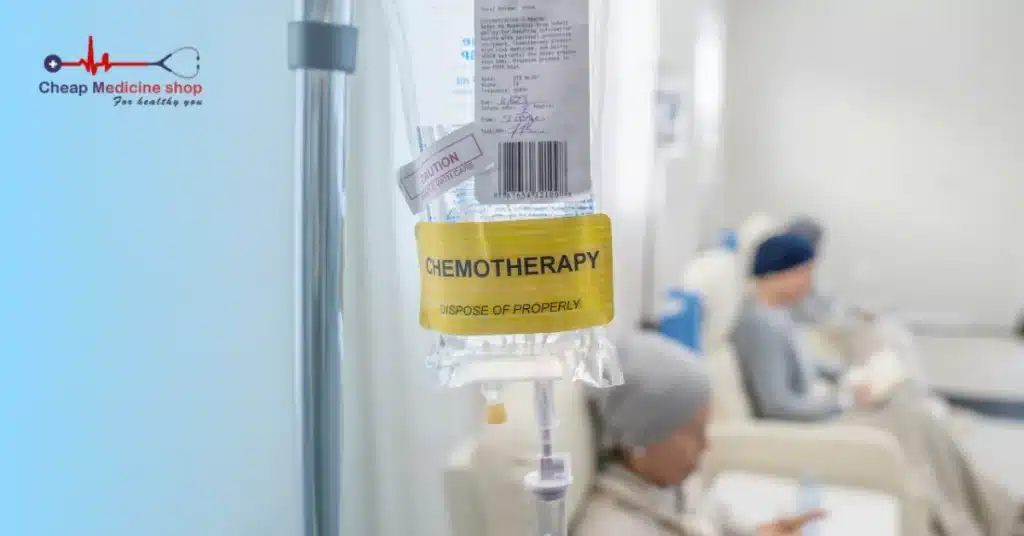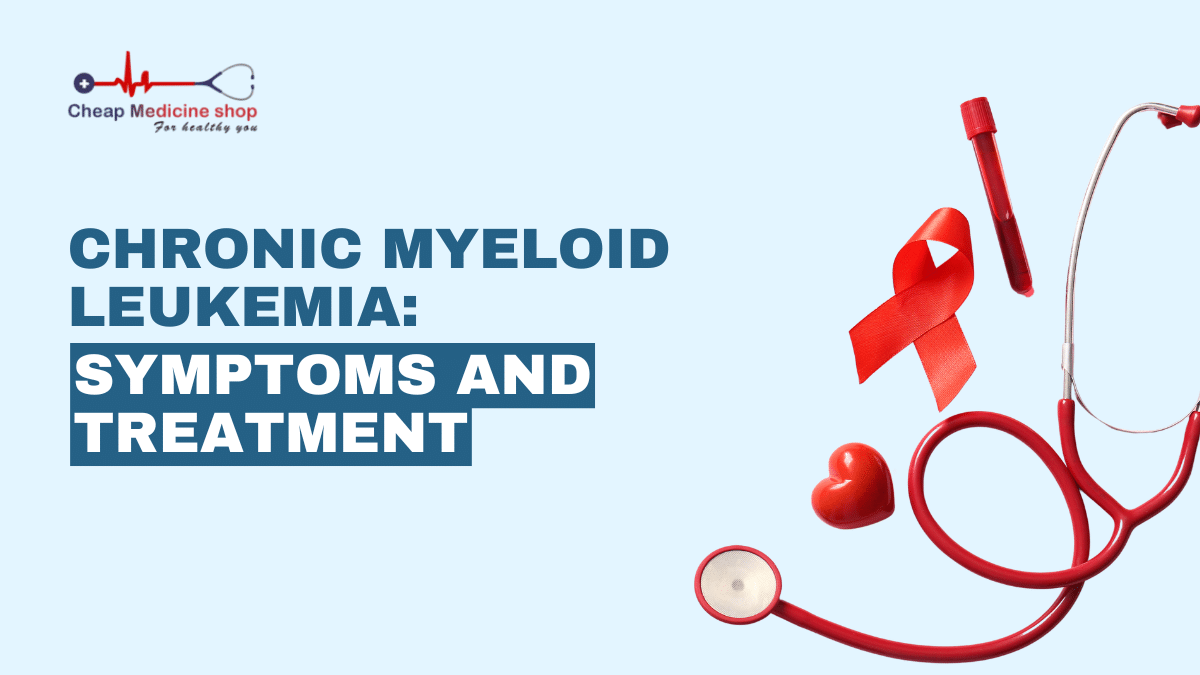Imagine feeling a bit more tired than usual, losing a few pounds without trying, or waking up soaked in sweat at night—symptoms often linked to stress or a hectic lifestyle. For many people, these mild indicators are the initial indications of Chronic Myeloid Leukemia (CML), a rare Blood Cancer that frequently appears silently before exposing itself in routine blood tests or at the doctor’s office.
Most people with CML have a unique chromosomal abnormality, the Philadelphia chromosome. This abnormality produces a defective gene that causes cells to expand uncontrollably. While CML can grow silently and without symptoms at first, it can worsen over time if left untreated.
Many people with CML can manage the condition and live healthy lives thanks to medical advancements. This article will highlight CMS’s basic attributes, helping you diagnose and provide effective treatment easily.
Chronic Myeloid Leukemia stages
Chronic Myeloid Leukemia (CML) a type of Leukemia. It is a slow-growing Cancer that originates in the bone marrow, the soft region within bones where blood cells are produced. In CML, a mistake occurs in the DNA of a blood-forming cell, causing it to make a large number of abnormal white blood cells.
These cells can push out healthy blood cells, causing symptoms such as fatigue, frequent infections, and easy bruising. CML generally advances slowly and has the following three main phases:
- Chronic phase: This is the first and typically the most prolonged phase. Many patients in this stage have little or no symptoms and can be detected with a basic blood test. The aberrant white blood cells are present, although in minimal numbers.
- Accelerated phase: If untreated or therapy fails, CML can advance to the accelerated phase. During this stage, the number of blast cells (immature white blood cells) grows, and other blood cell counts may become abnormal. Symptoms may become more pronounced.
- Blast crisis: This is CML’s most advanced and aggressive phase. It mimics Acute Leukemia, with many blast cells in the blood and bone marrow. Symptoms are typically severe and life-threatening.
Save up to 90% on your medicine bills

Abraxane 100 Mg Injection

Alphalan 5 Mg Tablets

Adriamycin 50 Mg Injection

Abirapro 250 Mg Tablet
Chronic Myeloid Leukemia symptoms
Many individuals with CML, particularly in the early chronic phase, might not have any visible symptoms. When symptoms arise, they often develop gradually and are general, frequently resembling those of other disorders. These symptoms might include:
- Fatigue
- Fever
- Night sweats
- Weight loss
- Splenomegaly
- Bone pain
- Pale skin
As CML progresses to the accelerated or blast phase, symptoms can become more severe and may include:
- Increased fatigue and weakness
- Worsening bone pain
- Increased bleeding and bruising
- More frequent and severe infections
- Enlarged lymph nodes
- Headaches
- Blurred vision
In case these symptoms persist or worsen, seek medical help immediately.
Chronic Myeloid Leukemia causes
The Philadelphia chromosome is a unique genetic defect that distinguishes CML. This chromosome originates when a portion of chromosome 9 and a piece of chromosome 22 separate and switch locations. This exchange generates a new gene termed BCR-ABL1. The precise reason for this shift is unknown; however, it is thought to be produced by environmental or random genetic changes.
The BCR-ABL1 gene triggers the formation of tyrosine kinase, an abnormal protein that is constantly “on.” This protein causes the bone marrow to secrete excess white blood cells, leading to CML. The Philadelphia chromosome is detected in almost every individual with CML and is a vital diagnostic sign.
Other risk factors include:
- Radiation exposure: High-dose radiation (e.g., atomic bomb survivors).
- Age: Most common in adults between 50 and 60 years old.
- Gender: Slightly more common in males.
Diagnosis of CML
CML is usually diagnosed using a combination of blood testing and bone marrow examinations. These often include:
- Complete Blood Count (CBC) with differential: This test determines the different types of blood cells. CML often has a high white blood cell count.
- Peripheral blood smear: A blood sample is examined under a microscope to detect abnormal cells.
- Bone marrow aspiration and biopsy: A sample of liquid bone marrow (aspiration) and a tiny piece of bone marrow tissue (biopsy) are collected, often from the hip bone. These specimens are examined under a microscope to determine the number and appearance of blood cells.
- Cytogenetic analysis: This test detects the Philadelphia chromosome in blood or bone marrow samples.
- Fluorescence In Situ Hybridization (FISH): It is a method used for detecting specific DNA sequences, including the BCR-ABL1 gene.
- Reverse Transcription Polymerase Chain Reaction (RT-PCR): A very sensitive assay for detecting the BCR-ABL1 RNA transcript, even in trace levels. This is frequently used to evaluate treatment response.
Chronic Myeloid Leukemia treatment
The objective of CML treatment is to achieve very low levels of Cancer in the body and avoid progression to advanced stages. It mainly includes Tyrosine Kinase Inhibitors (TKIs) and other treatment approaches. Let’s have a look at these CML treatments in detail.
Tyrosine Kinase Inhibitors
TKIs have transformed the treatment of CML. These medications selectively target the BCR-ABL1 protein, reducing its activity and CML cell growth. TKIs have dramatically improved the prognosis for most CML patients, allowing many to enjoy nearly normal lives.
TKI treatment is often used for a lengthy period. Patients’ responses to therapy are assessed regularly using blood tests and, in some instances, bone marrow assessments.
Commonly used TKIs include:
- Imatinib
- Dasatinib
- Nilotinib
- Bosutinib
- Asciminib
- Ponatinib (used for patients with TKI resistance or specific mutations)
Other treatments

Other treatments that are less often used in the early chronic phase due to the effectiveness of TKIs, are:
- Chemotherapy: Chemotherapy uses medications that destroy Cancer cells. It can be given during the accelerated or blast phase or before a stem cell transplant.
- Interferon-alpha: Interferon-alpha is an immunotherapy that can reduce the spread of CML cells. It was more often used before the TKI era.
- Stem Cell Transplantation (Bone Marrow Transplant): It is the only potentially curative therapy for CML. It involves replacing the patient’s damaged bone marrow with healthy stem cells of a donor (allogeneic transplant). Stem cell transplantation is usually used for patients who have not responded to TKI treatment or are in the late stages of CML.
- Surgery (Splenectomy): If the spleen grows significantly and causes complications, it may need to be removed through surgery.
- Radiation therapy: It may be utilized to reduce an enlarged spleen or ease bone pain in advanced CML.
Chronic Myeloid Leukemia prognosis
Due to targeted therapy, such as Tyrosine Kinase Inhibitors, CML prognosis has improved considerably in the last two decades. Most people identified in the early or chronic stages of the disease can expect to live a near-normal life with correct treatment and regular monitoring.
If detected early and adequately controlled, CML is generally a long-term disease rather than a life-threatening sickness. However, the prognosis is dependent on factors such as the stage of CML at diagnosis, the patient’s response to therapy, and whether the Cancer develops resistance to treatments.
With continued developments in treatment and early identification, the long-term survival rate for CML patients has risen to 80-90%, making it one of the most curable types of Leukemia.
Conclusion
Chronic Myeloid Leukemia (CML) is a type of Blood Cancer that typically begins quietly, with many people experiencing few or no symptoms at all. When symptoms appear, they may include fatigue, weight loss, and night sweats.
The root cause of CML lies in a genetic change that creates the abnormal BCR-ABL1 gene, which tells the body to produce too many white blood cells.
While this might sound alarming, the outlook for CML has dramatically improved. With the discovery of targeted medicines like Tyrosine Kinase Inhibitors, treatment has become more precise and successful, allowing many people to enjoy long, healthy lives. Early identification and persistent monitoring are essential for managing and avoiding illness progression to more severe phases.

Frequently Asked Questions
Is Chronic Myeloid Leukemia hereditary?
No, CML is not hereditary and does not run in families. It is caused by a genetic mutation that occurs during a person’s lifetime, not one that is passed down from parents to children.
Is Chronic Myeloid Leukemia terminal?
No, CML is not necessarily terminal, especially when diagnosed early. With modern treatments like Tyrosine Kinase Inhibitors, many patients live long, healthy lives, and the disease can often be managed.
How common is Chronic Myeloid Leukemia?
CML is relatively rare, accounting for about 15% of all adult Leukemia cases. In the United States, approximately 8,000 to 9,000 new cases are diagnosed each year, mostly in middle-aged and older adults.
Can CML affect fertility?
Yes, some CML treatments, especially older therapies or stem cell transplants, can affect fertility. However, many patients on Tyrosine Kinase Inhibitors (TKIs) maintain normal fertility. It’s essential to discuss fertility preservation alternatives with your doctor before starting treatment.
Can diet influence CML treatment outcomes?
While no one diet will treat CML, a well-balanced diet promotes general health and immunological function. Some foods or supplements may interfere with medications, so consult your healthcare provider before making any dietary changes during treatment.
Cheap Medicine Shop only refers to credible, authoritative sources for our content. If you’re curious about how we ensure the integrity of our content, we encourage you to read our Content Information Policy.














